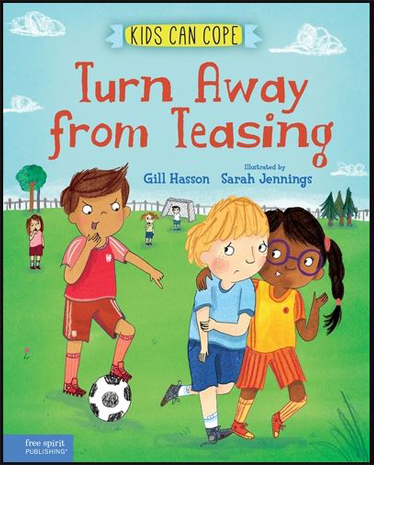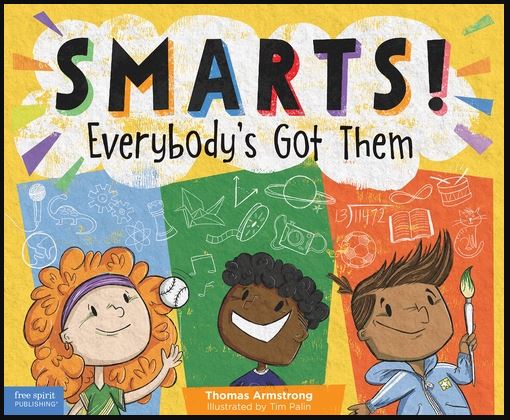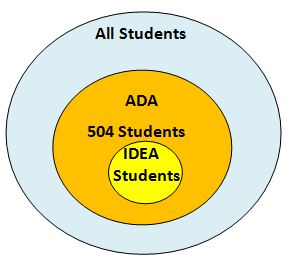Related Products
For Parents
Related Teacher Tools Takeout Items
Accommodations via 504 Plans and the Americans with Disabilities Act (ADA)
For additional information, especially on ADA requirements that schools ensure that communication access is as effective for children with hearing loss as it is for their typically hearing peers read more here.
Million Dollar Settlement Highlights Need to Accommodate Students with Hearing Loss
504 Plans
| Section 504 of the Rehabilitation Act of 1973 is a civil-rights law that prohibits discrimination on the basis of disability. Its enabling regulations often mirror the Individuals With Disabilities Education Act (IDEA) and may be a source of confusion in the schools. Section 504 covers all disabilities covered by the IDEA. If a student is disabled under the IDEA, he/she is also protected from discrimination under Section 504. The law prohibits discrimination against students with disabilities and requires that school districts take affirmative actions (making buildings and programs accessible) when necessary to accommodate students and other persons with disabilities. |
Refer to the handout Assessment & Accommodations for more information.
Students who are disabled under Section 504 ONLY are usually served with accommodations in the general education program. However, a free, appropriate education (FAPE) may include regular and/or Special Education and related services if these services are required in order to meet the individual educational needs of students with disabilities as adequately as the needs of nondisabled persons. Each case must be reviewed and needs determined on an individual basis. Section 504 students with disabilities must always be served in the least-restrictive environment (LRE). Section 504 defines a disabled person as any person (1) who has a physical or mental impairment that substantially limits one or more major life activities, (2) has a record of such an impairment, or (3) is regarded as having such an impairment. The second and third components of this definition cannot be used to provide FAPE to a student.
The test for determining whether a student is disabled under Section 504 requires the district to answer the following questions:
(1) Does the student have a mental or physical impairment?
(2) Does the impairment SUBSTANTIALLY limit one or more major life activities?
A physical or mental impairment is defined as (A) any physiological disorder or condition, cosmetic disfigurement, or anatomical loss affecting one or more of the following body systems: neurological, musculoskeletal, special sense organs; respiratory, including speech organs, cardiovascular, reproductive, digestive, genitourinary, hemic and lymphatic, skin, and endocrine; or (B) any mental or psychological disorder, such as mental retardation, organic brain syndrome, emotional or mental illness, and specific learning disabilities.
Major life activities include “functions such as caring for oneself, performing manual tasks, walking, seeing, hearing, speaking, breathing, learning, and working.” In the school setting, we are concerned with learning or with substantial limitations to other major life activities that affect the learning process. Even though a student has a physical or mental impairment, he/she is not entitled to special treatment under Section 504 (i.e., regular or Special Education and related aids and services designed to meet his individual educational needs) unless there is an “educational need.”
The next question that the 504 Committee must answer is the question of educational need. Educational need is determined on a case-by-case basis. The Office of Civil Rights has stated that educational need is not limited to academic problems stemming from the student’s disability. Educational need encompasses behavior problems that are linked to the disability; even if the student’s academic performance is within an acceptable range. A student who has no learning or behavior problems but who requires insulin shots, asthma treatments, or similar procedures that must be administered at school may have an educational need. A mobility-impaired student who needs a wheelchair ramp may also be eligible for services under Section 504.
Section 504 students with disabilities must be given a preplacement evaluation and must be reevaluated periodically and prior to any significant change of placement. Tests and other evaluation materials must be validated for the specific purpose, administered by trained personnel according to standardized procedures, and tailored to assess specific areas of educational need and may not be limited to a single IQ score. Assessment of adaptive behavior is required.
Placement decisions must be made by a group of persons (at least two) who are knowledgeable about the child, the meaning of the evaluation data, the placement options, the least-restrictive environment requirements, and issues related to comparable facilities. Decisions about Section 504 eligibility and services should be documented in the student’s file and reviewed annually. An accommodation plan is written, and copies are distributed to all persons responsible for making accommodations. Section 504 students are not exempt from state- and district-mandated testing. Allowable test modifications may be used for 504 students with disabilities if the students require the modifications in the classroom.
Exerpted from The Dyslexia Handbook, Copyright 2014, Texas Education Agency
Americans with Disabilities Act
For additional information, especially on ADA requirements that schools ensure that communication access is as effective for children with hearing loss as it is for their typically hearing peers read more here.
Article: Access is the Issue Not Hearing Loss: New Policy Clarification Requires Schools to Ensure Effective Communication Access by Karen Anderson from ASHA Perspectives on Hearing and Hearing Disorders in Childhood, Volume 25, pg 24-36. Published April 2015.
One of the issues that the ADA mandates is an equal opportunity to participate in or benefit from the goods and services offered by a place of public accommodation. However, it does not guarantee that an individual with a disability must achieve an identical result or level of achievement as persons without disabilities (III-3.3000 Equality in participation/benefits). For more information on Title III of the ADA click here for the manual.
For a landmark ADA settlement between the Department of Justice and Rhode Island click here. It defines training within vocational settings for students and employment expectations for students with disabilities.
For information regarding an ADA settlement related to exclusion of a student at the Pennsylvania school for the deaf, click here.
Section 504 and the ADA
This memorandum addresses the obligations of a public school system under Section 504 of the Rehabilitation Act of 1973 and the Americans with Disabilities Act (ADA). Deaf or hard of hearing students, parents and others are entitled to equal access and an equal opportunity to participate in public school services, programs, and activities. The ADA and Section 504 apply to all programs and activities offered by a school system, including school board meetings, extracurricular programs, teacher conferences, recreational activities, social and cultural activities, adult education, summer school or hobby classes.
Section 504, 29 U.S.C. § 794, requires programs which receive federal financial assistance to provide accommodations, such as qualified interpreters, real-time captioning (also called CART), assistive listening devices, or other auxiliary aids, to people with disabilities when necessary to ensure effective communication. See also 34 C.F.R. §§ 104.4 and 104.21. Public school systems receive substantial federal financial assistance, so this law applies to them.
Title II of the ADA, 42 U.S.C. §§ 12101-12213, requires comparable access by all state and local government programs, regardless of whether or not the programs get federal financial assistance.
A separate federal law, the Individuals with Disabilities Education Act (IDEA), also affects children with disabilities. The IDEA requires public school systems to provide a “free, appropriate public education” to children who need special education or related services because of a disability. The IDEA establishes a procedure for developing an individualized education program (IEP) and identifying needed support services for individual children. Although this is the principal law which determines the special educational services children will receive from a school system, Section 504 and the ADA provide additional protection, especially in the context of architectural accessibility, extracurricular activities, summer programs, and services for parents, members of the public, and other individuals with disabilities.
The U.S. Department of Justice has issued regulations to implement Title II of the ADA, which applies to activities of public entities such as school systems. 28 C.F.R. Part 35. The accompanying Analysis specifically addresses the question of duties of school systems to provide accessibility to parents with disabilities:
Some commenters asked for clarification about the responsibilities of public school systems under section 504 and the ADA with respect to programs, services and activities that are not covered by the Individuals with Disabilities Education Act (IDEA), including, for example, programs open to parents or to the public, graduation ceremonies, parent-teacher organization meetings, plays and other events open to the public, and adult education classes. Public school systems must comply with the ADA in all of their services, programs, or activities, including those that are open to parents or to the public. For instance, public school systems must provide program accessibility to parents and guardians with disabilities to these programs, activities, or services, and appropriate auxiliary aids and services whenever necessary to ensure effective communication, as long as the provision of the auxiliary aid results neither in an undue burden or in a fundamental alteration of the program.
56 Fed. Reg. 35696 (July 26, 1991).
The ADA Title II regulations specifically address the obligation of a school board or other public entity to remove communication barriers for deaf individuals:
(a) A public entity shall take appropriate steps to ensure that communications with applicants, participants, and members of the public with disabilities are as effective as communications with others.
(b)(1) A public entity shall furnish appropriate auxiliary aids and services where necessary to afford an individual with a disability an equal opportunity to participate in, and enjoy the benefits of, a service, program, or activity conducted by a public entity.
(2) In determining what type of auxiliary aid and service is necessary, a public entity shall give primary consideration to the requests of the individual with disabilities.28 C.F.R. § 35.160.
The regulations define “auxiliary aids and services” to include:
Qualified interpreters, note takers, transcription services, written materials, telephone handset amplifiers, assistive listening devices, assistive listening systems, telephones compatible with hearing aids, closed caption decoders, open and closed captioning, telecommunications devices for deaf persons [TTYs], videotext displays, or other effective methods of making aurally delivered materials available to individuals with hearing impairments; . . . and . . . other similar services and actions.
28 C.F.R. § 35.104.
The appropriate auxiliary aid or service depends on the context of the communication and the needs of the individual with a disability. For example, in a school auditorium or a school board meeting, some deaf people may need a sign language interpreter to follow and participate in the proceedings. Other people who are hard of hearing may not use sign language. They may need a computer-assisted transcript (also called CART) or an assistive listening system (e.g., a loop system or an FM or infrared amplification system) in order to understand and participate in the same activity. If the school has videotapes or films, or if it broadcasts on cable television, captioning may be the most appropriate way to give access to deaf and hard of hearing viewers.
In order to make sure that deaf and hard of hearing individuals are alerted to a fire or other emergency, a school system should install visual (flashing) fire alarms. Other examples of accommodations for deaf and hard of hearing people include visible fire alarm systems, amplification systems that are compatible with hearing aids, entry systems that do not depend on ability to use an intercom or respond to a buzzer or other auditory device. A telecommunication device for deaf persons (TTY) and making and receiving calls through a relay service may also be necessary, so that the school and parent can communicate about illnesses, schedules, discipline of a child and other matters.
The primary concern is whether or not the auxiliary aid or service is effective to make the spoken or aural information available and to give the person who is deaf or hard of hearing an equal opportunity to participate. When there is a disagreement or uncertainty about the appropriate auxiliary aid, the ADA Title II regulations require the public agency to give “primary consideration” to the requests of the individual with a disability. In analysis of this regulation, the Department of Justice states:
. . . The public entity shall honor the choice [of the deaf or hard of hearing individual for a particular auxiliary aid] unless it can demonstrate that another effective means of communication exists or that use of the means chosen would not be required under § 35.164. Deference to the request of the individual with a disability is desirable because of the range of disabilities, the variety of auxiliary aids and services, and different circumstances requiring effective communication.
56 Fed. Reg. 35711-12 (July 26, 1991).
A federal court has ruled that school systems must provide interpreters when deaf parents meet with teachers or attend school programs such as orientation programs. Rothschild v. Grottenthaler, 907 F.2d 886 (2nd Cir. 1990). The Office for Civil Rights for the U.S. Department of Education has held that PTA programs and activities are covered by the ADA, in that the school district provides significant indirect assistance to the PTA. Irvine Unified School District, 19 IDELR 883 (OCR 1993).
The Office for Civil Rights has also determined that sign language interpreters permit deaf people to participate meaningfully in federally-assisted programs. It has ruled that public school systems must give access to extracurricular programs, and must give access when they offer services to parents as well as to students.
The public agency may not assess any additional charge for the provision of an auxiliary aid or service. 28 C.F.R. § 35.130(f).
School systems should routinely publicize the method that deaf and hard of hearing persons can use to request necessary services such as qualified interpreters, real-time captioning (also called CART), or assistive listening devices. A public entity must have a procedure that a deaf or hard of hearing person can use to request such aids or services at school system activities. TTY-accessible telephone numbers should be clearly identified in telephone directory listings, school system letterhead, and information disseminated about school system services.
Failure to provide a qualified sign language interpreter or other auxiliary aids or services for a deaf or hard of hearing parent or child under these circumstances would be a discriminatory practice.
Any time a school building is altered or constructed, the building must meet the minimum standards in the ADA Accessibility Guidelines (ADAAG) or the Uniform Federal Accessibility Standards (UFAS), 28 C.F.R. § 35.151. The ADAAG standards are published as Appendix A to 28 C.F.R. Part 36.
The information on required accommodations under Section 504 and the ADA is from National Association of the Deaf.




